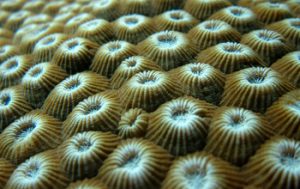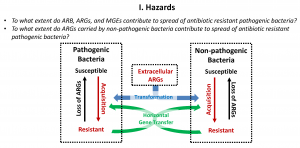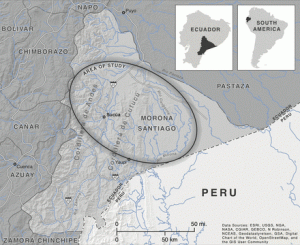Very torn about this. On the one hand “Microbiology of the Built Environment” by Jack Gilbert and Brent Stephens is a great summary of the current status of the field. On the other hand, it’s behind a paywall and I can’t access the article from my house where I am currently working. In the interests …
One of the hurdles in linking microbial ecology with building science has been incorporating quantitative information about the microorganisms encountered in indoor environments, mainly because the standard high-throughput amplicon approach for community analysis is semi-quantitative, at best. Over the summer, there was a Twitter conversation related to this topic. My take-away from this (what I view …
Residences represent an important site for bioaerosol exposure because of the large proportion of time that people spend in their homes. Using real-time instrumentation, our recent study in Indoor Air investigated bioaerosol concentrations, emissions, and exposures in a northern California residence, focusing on the effect of human occupancy and activities. Using an ultraviolet aerodynamic particle …
I am posting this on behalf of mSystems, for which I am a Senior Editor. ASM’s journal, mSystems®, is planning to publish a new volume of its Early-Career PIs special issue in 2019. As with the last issue, this issue will feature Perspective articles by early-career principal investigators highlighting their innovative research and their views on …
This new #OpenAccess paper may be of interest to those out there thinking about microbes in the built environment. : Luhung I, Wu Y, Xu S, Yamamoto N, Wei-Chung Chang V, Nazaroff WW (2018) Exploring temporal patterns of bacterial and fungal DNA accumulation on a ventilation system filter for a Singapore university library. PLoS ONE …
Some important reading for those interested in microbiomes. NSF’s mission is to advance the progress of science, a mission accomplished by funding proposals for research and education made by scientists, engineers, and educators from across the country. From NSF: A group of 23 U.S. government agencies, including the National Science Foundation (NSF), have joined to …
This should be of interest to many: mSystems has a whole issue dedicated to essays by “Early-Career Systems Microbiology Scientists”. Early-Career Systems Microbiology Scientists Jack A. Gilbert mSystems March/April 2018 3:e00002-18; doi:10.1128/mSystems.00002-18 http://msystems.asm.org/content/3/2/e00002-18 Conflict of Interest Declarations by Contributing Editors of the Special Issue on Early-Career Systems Microbiology Scientists, Sponsored by Janssen Human Microbiome …
Of potential interest:: The Struggle for Water Justice from the Center for Regional Change at UC Davis. Summary: The Struggle for Water Justice: Disadvantaged Unincorporated Communities in California’s San Joaquin ValleyFebruary 2018 In California, lack of access to clean, safe, and affordable water is a threat to public health and well-being, and violates the state’s newly codified …
Paper of possible interest: Hong, P.-Y.; Julian, T.R.; Pype, M.-L.; Jiang, S.C.; Nelson, K.L.; Graham, D.; Pruden, A.; Manaia, C.M. Reusing Treated Wastewater: Consideration of the Safety Aspects Associated with Antibiotic-Resistant Bacteria and Antibiotic Resistance Genes. Water 2018, 10, 244. Abstract: As more countries engage in water reuse, either intended or de facto, there is …
There is a new paper out of possible interest. Source: Stagaman K, Cepon-Robins TJ, Liebert MA, Gildner TE, Urlacher SS, Madimenos FC, Guillemin K, Snodgrass JJ, Sugiyama LS, Bohannan BJM. 2018. Market integration predicts human gut microbiome attributes across a gradient of economic development. mSystems 3:e00122-17. https://doi.org/10.1128/mSystems.00122-17. Abstract: Economic development is marked by dramatic …





